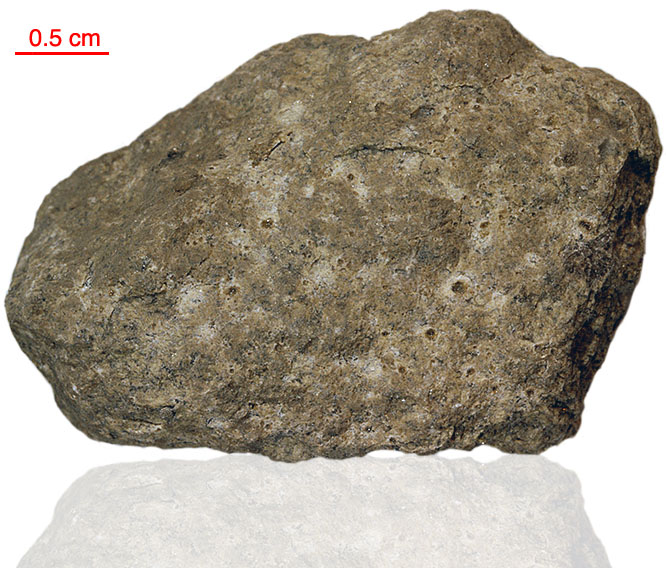
Fact sheet
65357 and 65358 are coherent impact melt rocks that were collected as part of a rake sample. 65357 has relatively high Ti and ilmenite content. Both rocks have poikilitic texture with evidence of precursor clastic origin. Oikocrysts of low-Ca pyroxene surround crystals of plagioclase, olivine and augite. Ilmenite and accessory minerals are found inter-oikocryst. Accessory minerals include metallic iron, baddeleyite and a “K-rich” phase.
The sample weighed 18.8 grams before analysis and has been dated at 3.96 ± 0.04 billion years (Ar/Ar).
Further details of this and other Apollo samples are here: http://curator.jsc.nasa.gov/lunar/
The Apollo 16 landing site was in the hilly region around Descartes crater in the lunar highlands. The landing spot was chosen to allow the astronauts to gather geologically older lunar material (Descartes Formation and the Cayley Formation) than the samples obtained in the first four landings, which were in or near lunar maria.
The mission lasted 11.1 days, with a stay on the lunar surface of 71 hours. The crew were on the lunar surface for 20.2 hours during which they traversed approximately 27 kilometers and collected approximately 96 kilograms of samples.
Apollo 16 was launched on 16 April 1972.






